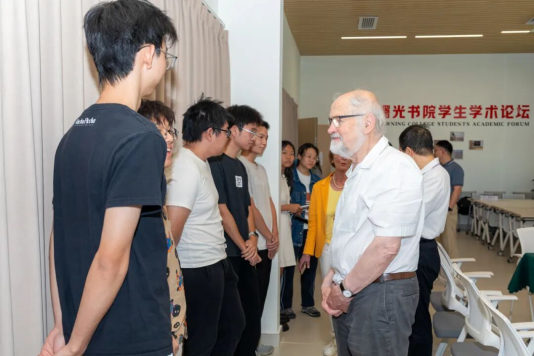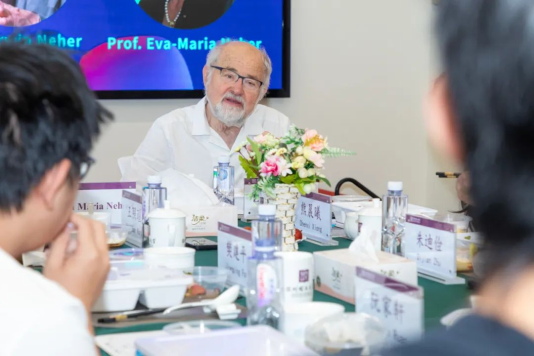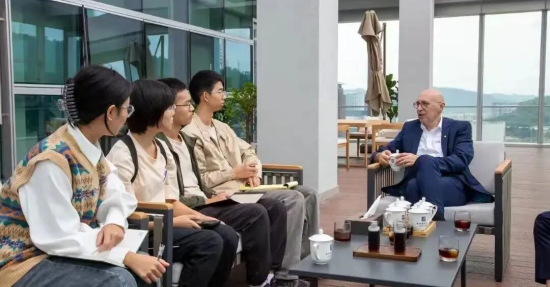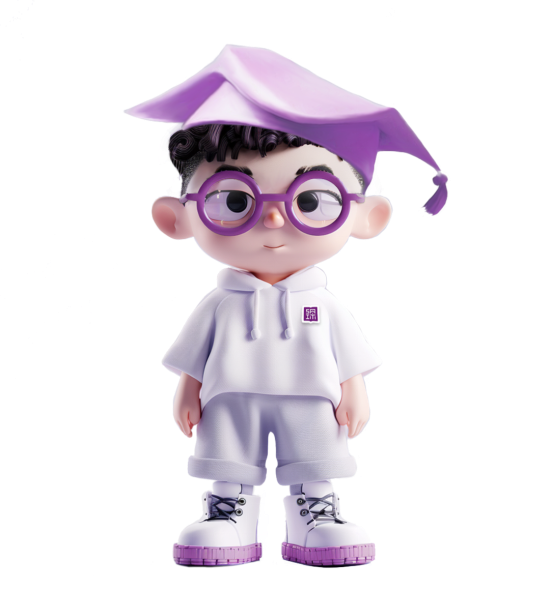Through close contact, I deeply felt the personal charm of the Nobel laureate—no airs, amiable, and with an almost obsessive love for academia.
On June 10, after a face-to-face exchange with the famousGerman biophysicist, 1991 Nobel Prize winner in Physiology or Medicine, Director of the Neher Neural Plasticity Nobel Laboratory at the Brain Institute of Shenzhen Institutes of Advanced Technology (SIAT), Chinese Academy of Sciences / Hong Kong-Shenzhen Institute of Brain Science and Innovation, Erwin Neher, first-year undergraduate Xiong Chenxi from Shenzhen University of Advanced Technology said.
On that day,Erwin Neher and his wife Eva Maria Nehervisited Shenzhen University of Advanced Technology, accompanied byParty Secretary Zhu Dijian, President Fan Jianping, Dean of the Faculty of Life and Health Sciences Ye Keqiang, and others, where they learned about the university's construction, educational characteristics, training model, faculty strength, school settings, academy situations, etc.
Upon learning that Shenzhen University of Advanced Technology was built into a university with a beautiful campus and strong research atmosphere in just 6 years, Erwin Neher exclaimed repeatedly,“This is the China speed, Shenzhen speed!”He highly agreed with the university's talent cultivation philosophy, especially emphasizing undergraduate participation in research training, exploring and practicing the "three academies integration" cultivation system of faculties, research institutes, and colleges to nurture well-rounded top innovative talents,"From the photos, I see that since last year, multiple Nobel Prize winners and Turing Award winners have come here to exchange with students, which is a very precious learning experience for the students.”
That noon
Erwin Neher and his wife entered Dawning College
Participating in the Colleges’s"Nobel Navigation"featured activity
Freely chatting with first-year undergraduates and jointly trained postgraduates about research journeys
Youth aspirations and life development, etc.

"I am currently learning patch-clamp technology and know that you are the inventor of this technology; I admire you very much. I am very curious about the invention process of the patch-clamp technology, such as how you started this research? What opportunity made you pay attention to electrical signals in the human body?" Asked a student.
In fact,Erwin Neher's research journey also began with interest and love:"In high school, I was mainly interested in technical things, and also in biology. After learning about cellular electrical signals, I decided to systematically study biophysics. Many excellent scientists are like me, locking onto a problem and thinking continuously until solving it. ”

Erwin Neher told the students thatto become a scientist, the most important thing is to cultivate curiosity and creativity, find the most attractive problem for oneself, and then choose the discipline needed to solve it."When you strive for it and continuously learn, you should try to go to the world's top laboratories, because they are solving the problems you care about." But the road to research is not smooth; he believes that"the key is to maintain the desire for knowledge and have the motivation to overcome difficulties time and time again.”
"Most biological experiments require long time cycles; what if after persisting to the end, no good results are obtained?" Asked another student.

Erwin Neher replied, "First, not all biological experiments take a long time. But even if the expected results are not obtained, we must carefully analyze the reasons; perhaps the results reveal something more important." He believes thatscientific research itself is like an adventure; exploring the unknown requires going through the process, unlike manufacturing where products can be obtained by following procedures.One must accept the possibility of experimental failure, persist in thinking about the problem, try different methods, and start over.
When asked about self-management methods, Erwin Neher believes thatthe most crucial is self-discipline, setting work schedules, being strict with oneself, and striving to overcome all difficulties.And as a scientist, maintaining continuous thinking and curiosity is very important.
As the director of the Neher Neural Plasticity Nobel Laboratory at the Brain Institute of Shenzhen Institutes of Advanced Technology (SIAT), Chinese Academy of Sciences / Hong Kong-Shenzhen Institute of Brain Science and Innovation, Erwin Neher's arrival opened a precious window for students to closely contact the pinnacle of world research.
Shenzhen University of Advanced Technology, nurtured and grown under the solid support of the Shenzhen Institutes of Advanced Technology (SIAT), Chinese Academy of Sciences, was born with profound scientific genes. And the "Nobel Navigation" platform built under this close collaborative relationship transforms global top intellectual resources into educational advantages.This is the fourth time since last year that Shenzhen University of Advanced Technology has welcomed Nobel Prize and Turing Award winners, where students boldly ask questions face-to-face, colliding minds with top scholars.

Click the image to view details
In the future, Shenzhen University of Advanced Technology will continuously invite high-level talents from home and abroad to visit and exchange, providing more opportunities for undergraduates to learn face-to-face with them.

Some Students’ Exchange Feelings
"Professor Erwin Neher and his team invented the patch-clamp technology, which is still a commonly used technique today, making significant contributions to biological research. He also mentioned that research itself is his hobby—during spare time, he continues to think about unsolved scientific problems and explores the unknown. For them,research has long become an inseparable part of life and a lifelong pursuit of love.This pure scientist spirit deeply touched me. ”
—Wang Zhaoxuan
My mentor is conducting research on "neuron reconstruction," and daily experiments also involve observing neuroelectrophysiological signals, which is very close to Professor Erwin Neher's research direction, so I signed up for this luncheon immediately. At the luncheon, what impressed me most was the hobbies of Professor Erwin Neher and his wife: The professor's wife likes tending gardens, while the professor himself is passionate about tinkering with old mills and researching hydroelectric power. His wife Eva Maria Neher's words‘your research is your hobby’deeply touched me—they integrate academia into life, treating academic research as a beloved lifestyle.
—Xiong Chenxi
"Although we are freshmen and haven't learned much professional knowledge yet, we exchanged with Professor Erwin Neher about issues related to learning and life, as well as the difficult experiences he encountered in conducting research. In addition, there were many professors from the Faculty of Life and Health Sciences at the table, and during the chat, we learned about their research directions and a lot of knowledge about research, which also provided some guidance for my future research direction. ”
—Chen Hao